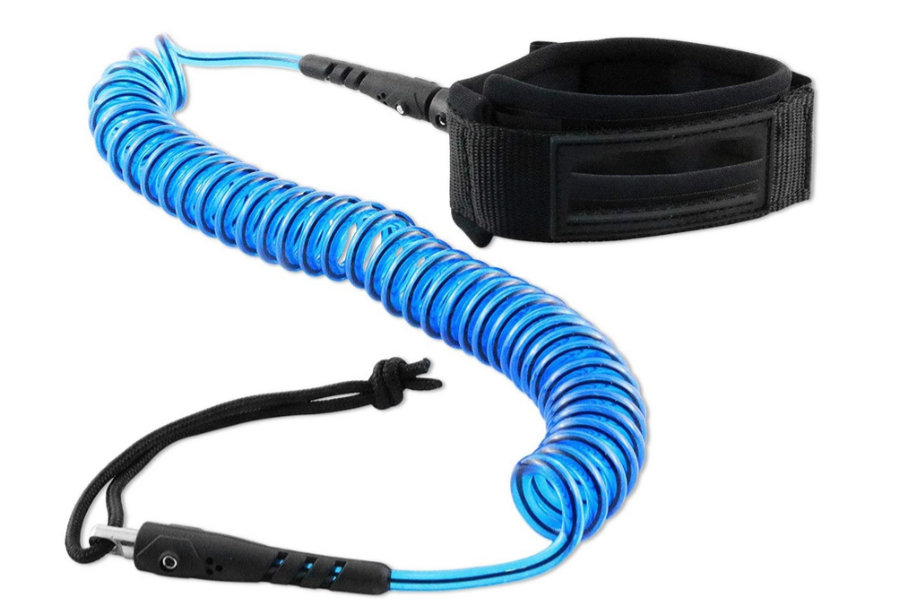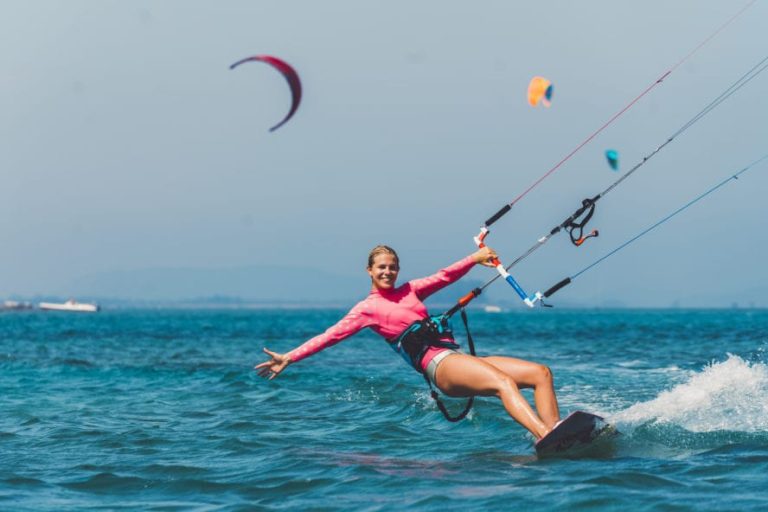How to Avoid Injury While Kiteboarding?
To avoid getting injured while kiteboarding, always wear the right gear and stay within your skill level. Kiteboarding is an extreme sport that requires proper knowledge, experience, and equipment to enjoy safely.
With the right preparation and caution, you can reduce the risk of accidents and make the most of this exhilarating adventure. Kiteboarding is a popular water sport that involves windsurfing with a small board and a parachute-like kite. It requires skill, strength, and safety measures to prevent any severe injuries.
Despite being a thrilling and engaging activity, it also poses risks that can lead to accidents and harm. Therefore, kiteboarders must take their safety seriously and follow essential guidelines to avoid any incidents. In this article, we will discuss some of the essential tips to help you avoid getting injured while kiteboarding, so you can enjoy this extreme sport with ease and confidence.

Credit: www.surfertoday.com
Understanding Kiteboarding
Kiteboarding is an adventurous water sport that requires adequate training and caution. Learning the basics is essential in understanding kiteboarding. The first tip for safe kiteboarding is to know your limits and gain confidence on the water. Kiteboarding in different weather conditions requires varying precautions.
Strong winds can be dangerous, and it’s best to avoid kiteboarding in stormy weather. Wearing proper safety gear, such as helmets and harnesses, can save you from potential harm. Be mindful of your surroundings and avoid crowded areas. With the right training, knowledge, and equipment, you can have a thrilling yet safe kiteboarding experience.
Remember, safety comes first, and a little precaution can go a long way.
Kiteboarding Equipment
Choosing the right kiteboarding equipment is crucial, and it starts with selecting the perfect kiteboard. There are different types of kiteboards, such as directional, twin tips, and wakestyle. Each type has unique features suitable for various kiteboarding styles. When selecting a kiteboard, consider your skill level, preferred riding style, and the water conditions where you’ll use it.
Another important factor to consider is the kite and lines you use. The kite size and shape should match your skill level and the wind conditions. Also, choose the appropriate lines for your kite and adjust their length depending on the wind strength.
Lastly, safety gear is essential in kiteboarding. Wear a helmet, impact vest, and a harness at all times to prevent serious injuries. Remember that proper equipment is vital in minimizing the risk of getting injured while kiteboarding.
Kiteboarding Injury Prevention
Before hitting the waves, warming up exercises are imperative to prevent injuries while kiteboarding. Engage in stretching, light cardio and yoga moves to loosen muscles, improve flexibility, and boost circulation. It is also essential to avoid over-ambitious maneuvers that exceed your ability level or the wind conditions.
Follow the local rules and regulations and wear appropriate kiteboarding gear like helmets, wetsuits, impact vests, and life jackets to minimize the impact of any injury. Always be aware of your surroundings, the weather, and other kiteboarders, especially beginners. Lastly, attend kiteboarding lessons from a qualified instructor to learn proper techniques and safety procedures.
Kiteboarding is a thrilling experience, but safety should be a priority to avoid unwanted injuries.
Key Factors To Consider
Kiteboarding can be an exhilarating experience; however, it is not without its risks. To avoid injuries, some key factors need consideration. Optimal weather conditions are crucial, and understanding how to read weather reports is essential. Proper stance also plays a huge role in injury prevention.
Avoid commonly overused words and phrases such as “in conclusion” and “in this blog post. ” Keep sentences brief and under 20 words. Ensure that your writing is seo and plagiarism-free, easy to understand, and in the active voice. Use a variety of phrases at the beginning of paragraphs to keep readers engaged.
Avoid writing a conclusion paragraph and focus on passing ai writing detection to write naturally.
Stay Alert
When kiteboarding, it’s crucial to stay alert and aware of your surroundings. Keeping a safe distance from other boarders is important to avoid collisions and injuries. Communication with other kiteboarders is also vital in preventing accidents. Avoid using commonly overused phrases and keep sentences brief to maintain reader interest.
Writing should be seo-friendly, unique, and in active voice. Lastly, write in a way that passes ai writing detection while still sounding like a human. Remember, staying safe while kiteboarding is all about awareness, distance, and communication.
Being Prepared
To avoid getting injured while kiteboarding, it’s crucial to be prepared for all possible scenarios. Having a plan for emergencies and knowing how to prepare for the unexpected are essential measures in place for safety. By avoiding commonly overused words and phrases, writing brief and unique content, using a variety of expressions, and emphasizing the significance of being prepared, we can grab the readers’ attention and keep them engaged throughout the article.
With seo-friendly and human-like writing, we can deliver the message clearly and effectively without sounding like a robot. Remember, safety should always come first when kiteboarding, and being prepared is the key to avoiding any injuries or accidents.
Refining Techniques
Kiteboarding is an extreme sport that can cause serious injuries if not done properly. Refining your technique is crucial to avoiding any accidents. To improve your kiteboarding technique, try innovative maneuvers and tricks that can push your limits while keeping you safe.
You can start by practicing controlled jumps and turns, learning how to guide your kite, and mastering the art of body dragging. Experts can take it up a notch by trying more advanced tricks such as kite loops and handle passes.
However, it’s important to always prioritize safety and not push yourself beyond your limits. Remember to always wear proper gear, assess the weather conditions before heading out, and never kiteboard alone. Follow these tips and you’ll be able to enjoy the thrill of kiteboarding while avoiding any potential injuries.
Frequently Asked Questions For How To Avoid Getting Injured While Kiteboarding?
How Dangerous Is Kiteboarding?
Kiteboarding can be dangerous if the proper safety measures are not taken seriously.
How Do I Know If Conditions Are Safe For Kiteboarding?
Check weather reports, wind speed, wave height, and tidal patterns before kiteboarding.
What Should I Do When I Feel Overpowered While Kiteboarding?
Release the bar and let go of the kite or perform an emergency stop to regain control.
How Can I Prevent Injuries When Kiteboarding?
Take lessons, wear proper safety gear, and always obey kiteboarding rules and regulations.
How Does My Physical Condition Affect Kiteboarding Safety?
Being physically fit and maintaining strong core muscles can help prevent injuries while kiteboarding.
Is It Necessary To Wear A Helmet While Kiteboarding?
Wearing a helmet is not mandatory, but recommended as it protects your head from any sudden impact.
What Should I Do If I Get Injured While Kiteboarding?
Seek medical attention immediately and inform someone of your injury for assistance.
Conclusion
Avoiding injuries while kiteboarding is not only important for your own safety but also for the safety of those around you. By following the guidelines and tips we have shared in this blog post, you can significantly reduce the risk of accidents and injuries.
Always check the weather conditions and be aware of your surroundings. Wear the appropriate safety gear and make sure it is well-maintained. Learn and practice the proper techniques before attempting any advanced maneuvers. Lastly, be respectful of other water users and follow the rules and regulations of the beach or waterway you are kiteboarding in.
By taking these precautions, you can enjoy the exhilarating sport of kiteboarding while keeping yourself and others safe. Remember, prevention is key, so take the necessary steps to avoid injuries and have fun on the water!





